National Theater of Korea (국립극장)
0m 43520 2024-03-06
59, Jangchungdan-ro, Jung-gu, Seoul
+82-2-2280-4114
The National Theater of Korea opened in 1950 as the first national theater in Asia. It is the only production theater that takes traditional arts to recreate them as contemporary art. It offers various types of theaters, such as Haeoreum Grand Theater, Daloreum Theater (middle-size), Immersive Studio ByeolByeol (small-size), and Haneul Round Theater with a circular stage structure. In addition, the Museum of Performing Arts, Cultural Plaza, and other convenience stores and coffe shops offer pleasure and relax to its visitors.
Banyan Tree Club & Spa Seoul (반얀트리 클럽 앤 스파 서울)
298.6596820601218m 32908 2021-06-22
60, Jangchungdan-ro, Jung-gu, Seoul
+82-2-2250-8000
Banyan Tree Club & Spa Seoul is a membership club & hotel operated by Banyan Tree Hotel & Resort, Singapore’s top resort brand. The new urban resort is a place where visitors can enjoy quality spa services while taking in a panoramic view.
Located on Namsan Mountain in the center of Seoul, Banyan Tree Club & Spa Seoul consists of three buildings: the Club, the Hotel and the Festa. Facilities include an outdoor sports center and other luxurious amenities like an outdoor pool, 23 cabanas, a sauna, fitness center, driving range, tennis court, outdoor playing field, spa, and kids’ club. The hotel houses 34 suites with private relaxation pools, and 16 members-only club rooms. The two Presidential Suites located on the top floor offer a fantastic night view of Seoul and Namsan Mountain.
Yejiwon (예지원)
299.93705303627695m 9809 2022-09-19
72, Jangchungdan-ro, Jung-gu, Seoul
+82-2-2253-2211
The Yejiwon is located in Seoul Jung-gu Jangchung-dong and has been offering traditional Korean etiquette education programs since its inception on September 16th, 1974. Furthermore, the Yejiwon also serves to introduce the traditional cultures and living cultures of Korean etiquettes to foreigners.
Most programs offered are short-term classes, and reservations can be made on the homepage up to 15 days in advance. Reservations are only available for groups of 10 or more and classes are instructed in Korean only, so it may be a good idea to be accompanied by a guide.
The Shilla Seoul (신라호텔(서울))
607.6123302626046m 50858 2021-05-31
249, Dongho-ro, Jung-gu, Seoul
+82-2-2230-3311
The Shilla Seoul is a luxury hotel with an outdoor sculpture garden and Guerlain Spa. Other facilities include a fitness center, sauna, swimming pool, business center, restaurants, and more. The hotel also offers guests a free shuttle bus to Myeongdong and Dongdaemun shopping centers.
Jangchungdan Park (장충단공원)
672.4905675673015m 19778 2020-03-18
261, Dongho-ro, Jung-gu, Seoul
Jangchungdan Park is located on the northeastern foot of Namsan Mountain. On August 20th, 1895, Empress Myeongseong was killed by Japanese soldiers in Gyeongbokgung Palace and many Korean soldiers such as Yi Gyeong-jik and Hong Gye-hun died while trying to hold back the intruders. In memory of these soldiers, Emperor Gojong built the Jangchungdan Shrine in November 1900 at the current site of the Shilla Hotel guesthouse. The shrine was lost during the Korean War and the area was renovated into a park in 1919.
On September 22, 1984, Jangchungdan Park was designated the 374th neighborhood park of Korea and part of the park was merged with Namsan Park. The remaining area retained the name “Jangchungdan Park” and is still home to cultural assets such as the Jangchungdan Memorial Stone, Supyogyo, Seungjeongjeon, Gwanseongmyo, and Waryongmyo. The park is considered a landmark of patriotism since it contains the 1919 Independence Movement of Korea Memorial Stone and other monuments dedicated to people such as Han Yong-un, Yu Gwan-sun, and Gim Yong-hwan who fought for the independence of Korea.
The Shilla Duty Free Shop - Seoul Branch (신라면세점 (서울점))
722.318898067572m 66040 2022-08-05
249, Dongho-ro, Jung-gu, Seoul
+82-1688-1110
The Shilla Duty Free Shop Seoul Store is located inside The Shilla Seoul Hotel. The duty free shop has over 400 brand stores that sell perfume, cosmetics, clothes, bags, watches, and jewelry, all of which can be purchased at discounted prices. Convenient amenities and services such as the rooftop cafe, free valet parking, and an outdoor sculpture park are also prepared so that customers can enjoy a carefree shopping experience.
Seoul Namsan Park (남산공원(서울))
736.2711607078843m 306420 2024-03-18
231 Samil-daero, Jung-gu, Seoul
Namsan Mountain rises in the heart of Seoul at an altitude of 265 meters and has been a significant landmark since the Joseon dynasty (1392-1897), leaving behind several ruins. It was heavily damaged in the early 20th century, but was partially restored in 1968 with the creation of the park. Highlights include Namsan Tower and love locks left by numerous couples. Visitors can also easily reach the top by a cable car or bus.
Haepungbuwongun Yun Taekyeong's Jaesil (해풍부원군윤택영댁재실)
779.9032614848998m 20392 2021-11-10
28, Toegye-ro 34-gil, Jung-gu, Seoul
+82-2-3396-5882
Haepungbuwongun Yun Taekyeong's Jaesil is a shrine house built by the father-in-law of King Sunjong of Joseon dynasty in 1906 when his daughter was proclaimed the crowned princess of Joseon and entered Changdeokgung Palace to later become Queen Sunjeong. Red pine trees salvaged from the demolition of Gyeongungung Palace were used to construct the house. It was originally located in Jegi-dong, Dongdaemun-gu, but was later restored and moved to its present location. The shrine of the house that was destroyed in 1960 was also restored.
Because the house is more of a shrine rather than residential living quarters, it has many unique features. For example, unlike other houses, it has the anchae (women’s quarters) located across from sarangbang (men’s quarters) with daecheong (living room) positioned between them.
Seoul Namsan Gugakdang (서울 남산국악당)
834.4564242791755m 22728 2021-08-02
28, Toegye-ro 34-gil, Jung-gu, Seoul
+82-2-2261-0500
Seoul Namsan Gukakdang was established by Seoul Metropolitan Government as a representative traditional art-centered performance hall in 2007. It is comprised of one ground and two basement levels. The performance hall is located on the basement floor with 300 seats, equipped with facilities that deliver pansori sounds and gayageum music to every seat. Visitors can make a reservation at the Namsangol Hanok Village website.
Namsangol Hanok Village (남산골한옥마을)
869.0530214349468m 531468 2023-02-17
28, Toegye-ro 34-gil, Jung-gu, Seoul
+82-2-2261-0500
Namsangol Hanok Village opened in 1998 on the northern side of Namsan Mountain in the center of the capital. This village has five restored hanok (traditional Korean house) premises, a pavilion, a traditional garden, a performance art stage, and a time capsule plaza, making it a perfect spot for locals and tourists to take a leisure walk. Upon entering from the front gate, visitors will get a taste of Korea's traditional life while escaping from bustling city life. The traditional garden with its pavilion and old houses creates a peaceful ambiance before the forested Namsan Mountain. A time capsule commemorating Seoul’s 600th anniversary was buried in 1994 at the highest point of the village and is scheduled to be reopened 400 years later in 2394.
The five hanok premises at Namsangol Hanok Village once belonged to aristocrats and government officials of the Joseon dynasty. Each house was originally located in a different neighborhood, but they were all moved to this area and restored to their original form. The houses were rebuilt using their original materials, except for one house, where the materials were too old and deteriorated to be reused. The premises were carefully restored and replicated according to their original form to depict the owners’ social class and personality. These buildings are now used as an exhibit to portray the living environment during the Joseon dynasty and as a venue for educational and cultural programs for children and tourists.
Some of the unique programs and activities to participate in include wearing hanbok, folding hanji (traditional Korean paper), writing in Korean, traditional tea ceremony, traditional etiquette school, and herbal medicine experience. There are also taekwondo demonstrations and other various performances held around the village. Visitors can also try traditional games such as yunnori (traditional board game), or understand more about the area through a guided tour.

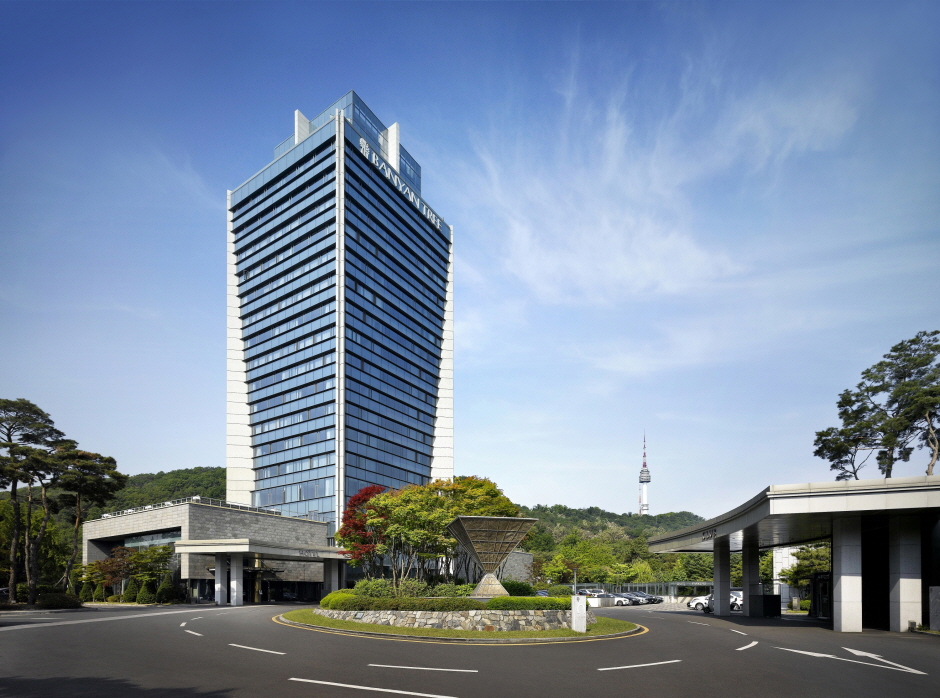
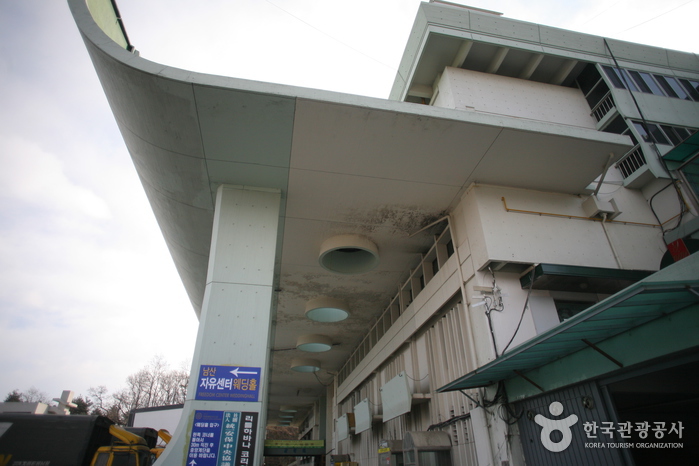
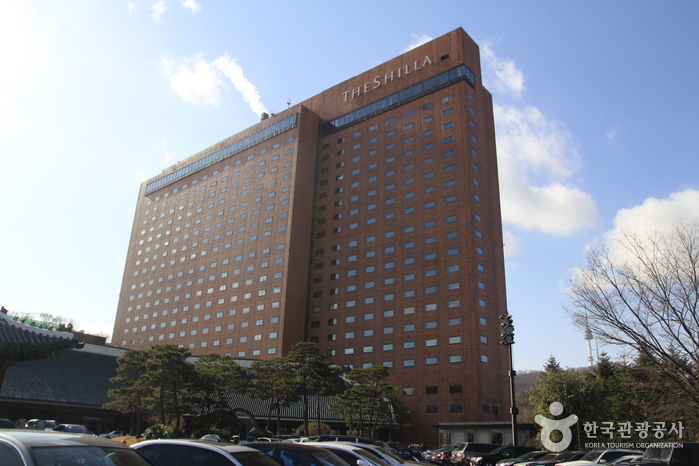

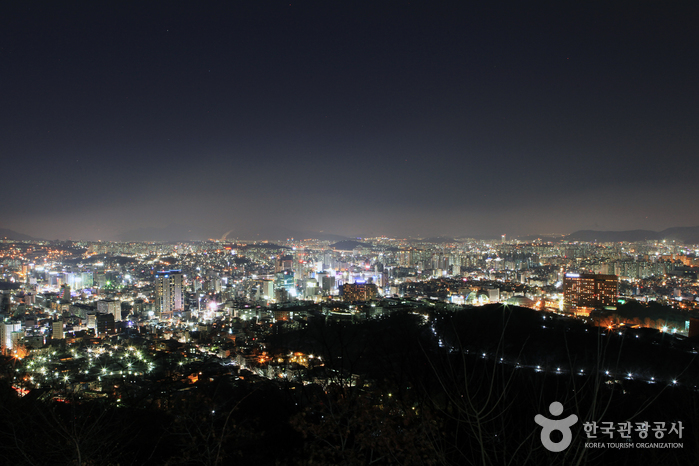
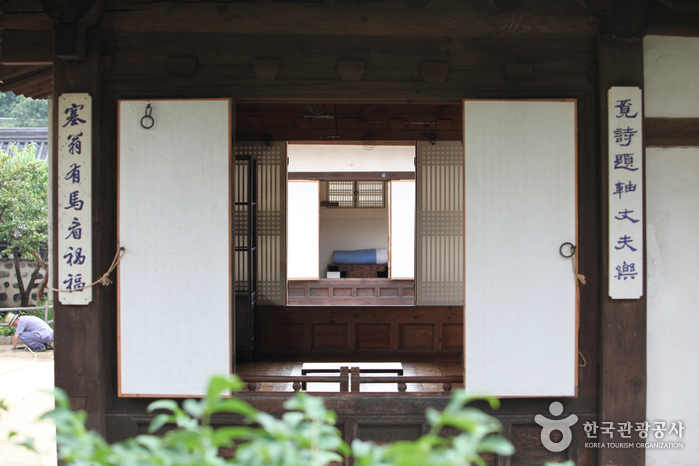
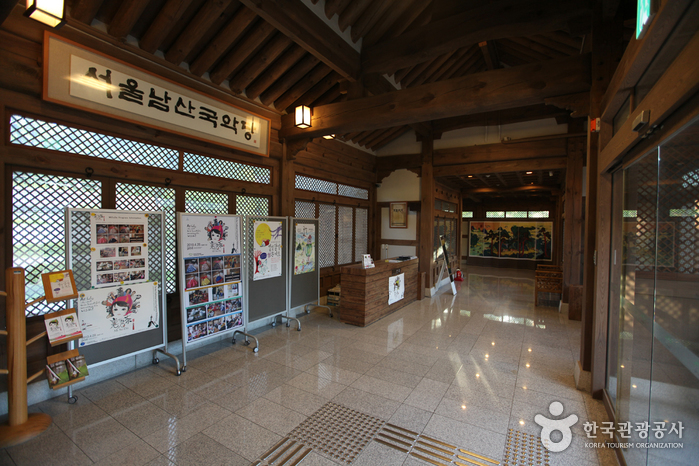
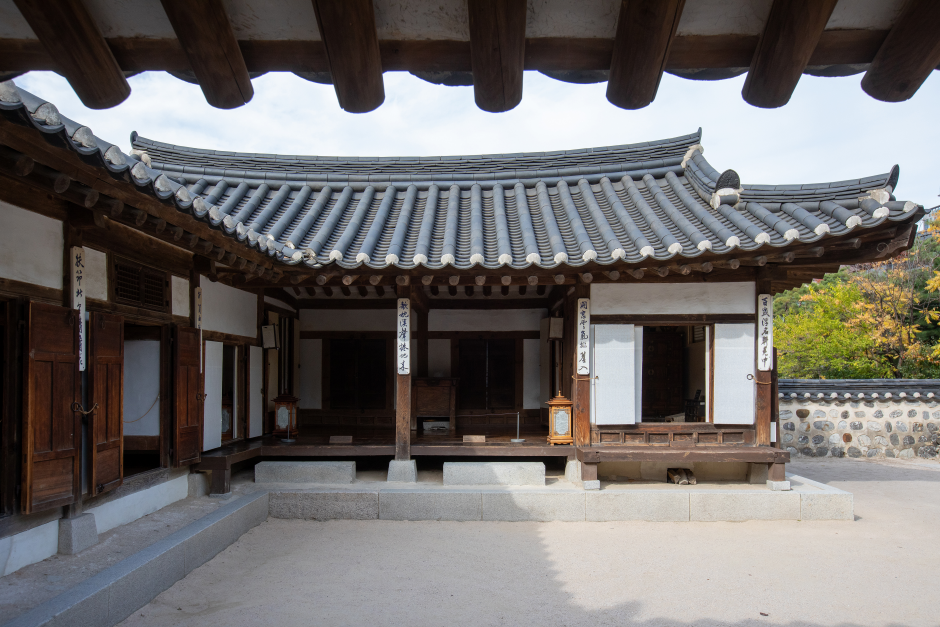
 English
English
 한국어
한국어 日本語
日本語 中文(简体)
中文(简体) Deutsch
Deutsch Français
Français Español
Español Русский
Русский